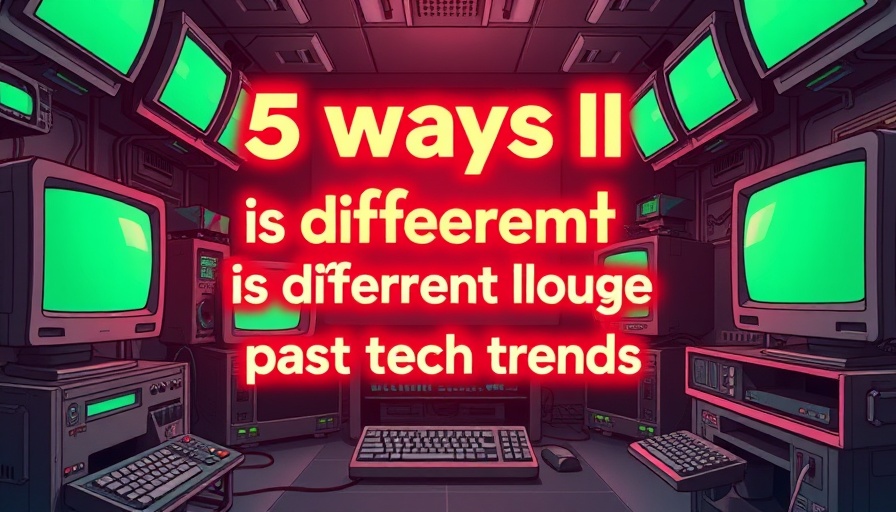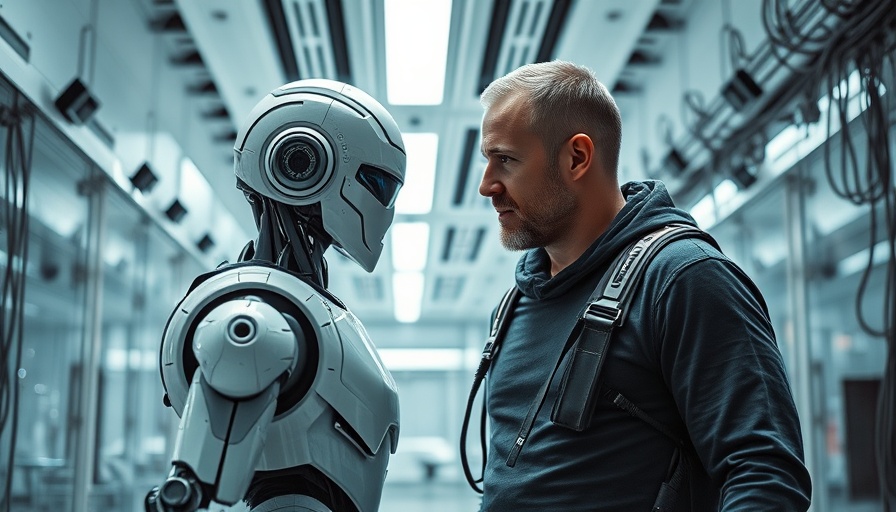
Understanding Why AI is More than Just a Tech Trend
Artificial Intelligence (AI) has historically been met with skepticism as just another tech trend, but the recent analysis from renowned analyst Mary Meeker details how AI is genuinely reshaping the technological landscape in unprecedented ways. In her first extensive trends report in six years, Meeker underscores that AI's evolution and adoption pace not only outclasses prior technologies but carries significant implications for businesses and society.
In '5 Ways AI is Different Than Past Tech Trends,' the discussion dives into the unprecedented aspects of AI, prompting us to analyze and expand on its implications.
The Speed of Change: A Transformation Like No Other
The report highlights an astonishing acceleration in AI development, with growth metrics that make the rise of the internet look gradual. Meeker points out the breathtaking 260% annual growth in data needed to train AI systems since 2010. To illustrate, consider that AI models have experienced a 167% growth over the last four years alone. Essentially, businesses today are not waiting for AI adoption—they are jumping in headfirst, indicating a rapid transformation that seems to be happening faster than anyone anticipated.
AI Adoption: It's All-Inclusive
Unlike prior tech trends where adoption was segmented primarily between consumers and tech start-ups, AI is attracting participants from various sectors. Governments, enterprises, and even global markets are embedding AI into their operations. Meeker notes that mentions of AI in corporate earnings have skyrocketed from 10% to over 50% in S&P 500 companies since the launch of applications like ChatGPT. This provides a strong signal that businesses recognize AI not just as a tool, but as a crucial enabler of growth and innovation.
Global Reach: AI Knows No Borders
Historical patterns of technology diffusion suggest that several years are required for significant user adoption outside North America. However, the evolution of AI is breaking these trends. Meeker points out that it took only three years for ChatGPT to achieve 90% user adoption outside its home market—indicating that the world is increasingly interconnected through this technological revolution. AI development is uniting diverse populations around the globe, leading to a new model of Internet interaction that moves beyond search bars and instead involves natural language communication.
Shifting Geopolitical Landscapes with AI Technologies
The race for AI supremacy is creating reshaped geopolitical dynamics, particularly between the United States and China. Meeker suggests that AI achievements could equate to geopolitical power, depicting our current moment as a tech space race. China is rapidly gaining ground on AI capabilities, indicated not only by its growing number of large-scale AI systems but also by the way its models—developed at lower costs—are catching up to American counterparts. This fierce competition reshapes business models, fostering an environment where innovation is indispensable.
The Depth of Disruption: An Era of Omnipresent Change
Meeker's report paints a picture of near-total disruption across multiple sectors, infusing sectors long-considered stable with new capabilities driven by AI. Unlike previous tech trends that had more limited impacts, AI is encompassing an unprecedented breadth of potential disruptiveness. Businesses must recognize that AI is not merely another trend in technology; it's a fundamental shift in how business operates.
The Imperative of Adopting AI Today
With the landscape morphing so rapidly and the potential of AI expanding exponentially, business owners must move from passive observation to active engagement. The current moment is ripe for leveraging AI developments, and those who delay may find themselves outpaced by competitors capturing the advantages of AI technologies. As we stand on the threshold of an AI-driven era, business leaders are encouraged to ask themselves: What are you waiting for? No matter your industry, START USING AI NOW to remain relevant and competitive in this fast-evolving landscape.
 Add Row
Add Row  Add
Add 




Write A Comment